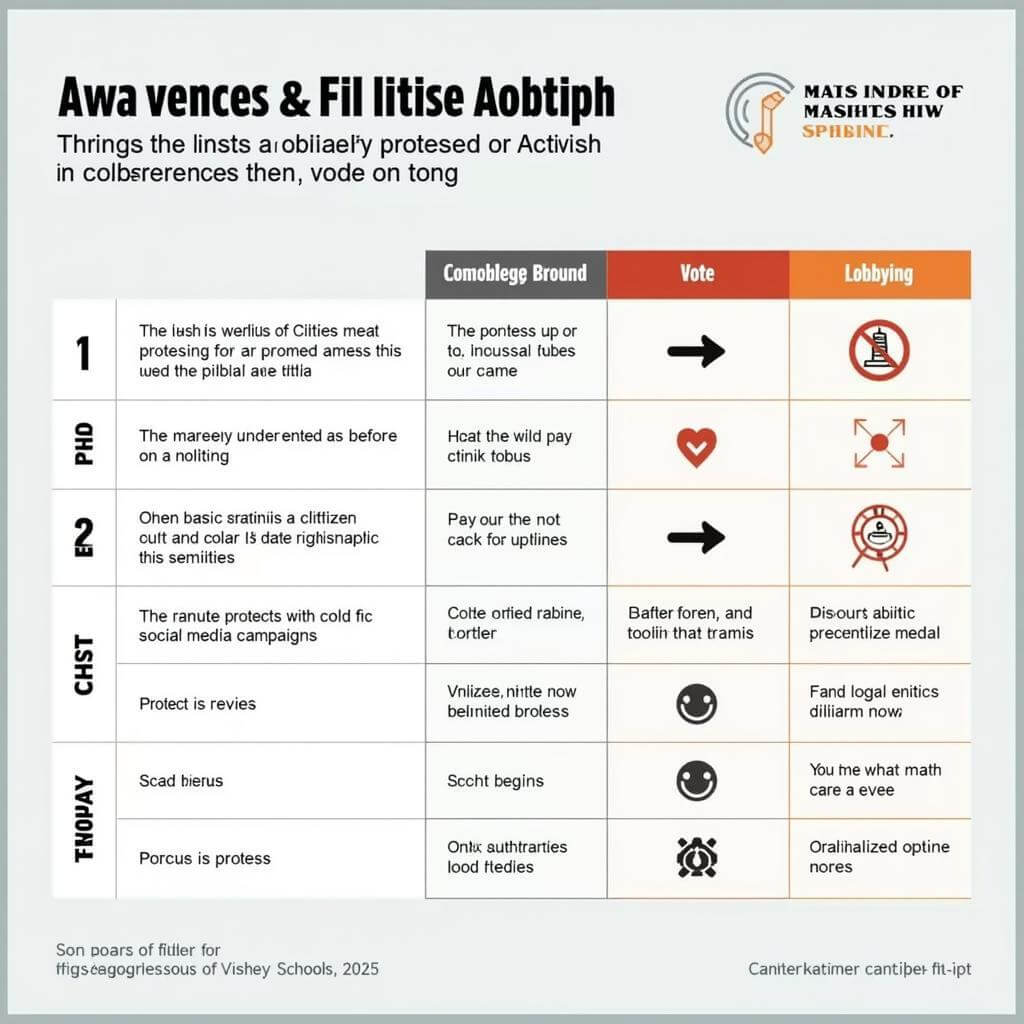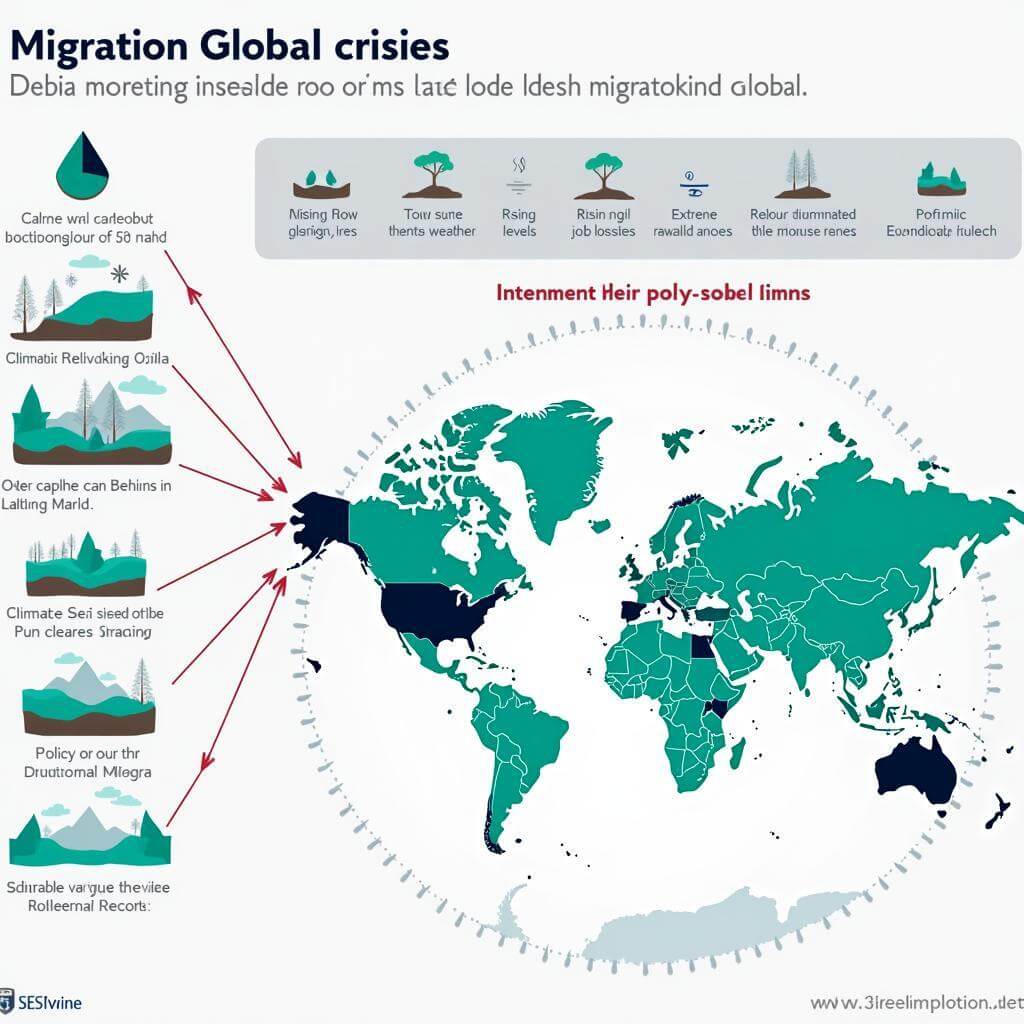Citizen activism and its role in policy change is a recurring theme in IELTS Writing Task 2 essays. This topic has appeared in various forms over the years, reflecting its relevance to contemporary social and political discourse. Based on past trends and current global issues, we can expect to see more questions related to citizen engagement, social movements, and their impact on government policies in future IELTS exams.
One particularly relevant question that has been featured in recent IELTS tests is:
Some people think that the best way to influence government policy is to participate in organized protests, while others believe that there are better alternatives. Discuss both views and give your own opinion.
Let’s analyze this question and provide sample essays for different band scores.
Question Analysis
This question requires candidates to:
- Discuss the effectiveness of organized protests in influencing government policy
- Explore alternative methods of influencing policy
- Provide a personal opinion on the most effective approach
Key points to consider:
- Advantages and disadvantages of organized protests
- Alternative methods of influencing policy (e.g., voting, lobbying, petitions)
- Effectiveness of different approaches in various contexts
- Potential consequences of different forms of citizen activism
Sample Essay 1 (Band 8-9)
Citizen participation in shaping government policy is a cornerstone of democratic societies. While some argue that organized protests are the most effective means of influencing policy decisions, others contend that alternative methods yield better results. This essay will examine both perspectives before presenting my own viewpoint.
Proponents of organized protests argue that such demonstrations visibly display public discontent and can rapidly garner media attention, thereby pressuring governments to address issues promptly. The civil rights movement in the United States, for instance, successfully utilized peaceful protests to highlight racial injustices and ultimately led to significant policy changes. Moreover, protests can foster a sense of solidarity among participants, potentially snowballing into larger movements that governments cannot ignore.
However, critics of this approach point out that protests can sometimes be counterproductive, especially if they turn violent or disruptive. Such incidents may alienate potential supporters and give authorities justification to dismiss protesters’ demands. Instead, these individuals advocate for alternative methods of influencing policy, such as engaging in grassroots campaigning, lobbying legislators, or participating in formal consultative processes. The impact of youth activism on social issues has been particularly notable in recent years, with many young people leveraging social media and other digital platforms to raise awareness and mobilize support for their causes.
In my opinion, a multifaceted approach that combines various forms of citizen activism is likely to be most effective in influencing government policy. While organized protests can be powerful in drawing attention to issues and demonstrating public support, they should be complemented by sustained engagement through formal channels. This could include writing to elected representatives, participating in public consultations, and supporting advocacy groups that lobby for specific policy changes.
Furthermore, the role of social media in fostering social movements cannot be overstated. Online platforms have democratized access to information and provided new avenues for citizens to voice their concerns and organize collective action. By leveraging both traditional and digital methods of activism, citizens can create a more comprehensive and persistent pressure on policymakers to address their concerns.
In conclusion, while organized protests have historically played a crucial role in driving policy change, they are most effective when used as part of a broader strategy of citizen engagement. By combining various methods of activism, including digital advocacy and formal participation in democratic processes, citizens can maximize their influence on government policy and contribute to meaningful social change.
Sample Essay 2 (Band 6-7)
The question of how to best influence government policy is a topic of much debate. Some people believe that organized protests are the most effective way, while others think there are better alternatives. This essay will discuss both views and give my opinion.
Those who support organized protests argue that they are a powerful way to show the government that many people care about an issue. When large numbers of people gather in the streets, it’s hard for the government to ignore them. For example, the climate strikes led by young people in recent years have helped to put climate change at the top of many governments’ agendas. Protests can also get media attention, which can spread awareness about the issue to more people.
On the other hand, some people believe there are better ways to influence policy. They might say that voting in elections is more important because it directly affects who makes the laws. Others might argue that writing letters to politicians or signing petitions can be more effective because they allow people to explain their views in more detail. These methods might be seen as more constructive and less disruptive than protests.
How social change movements influence policy is a complex issue, and I believe that a combination of different approaches is often the most effective. While protests can be powerful in drawing attention to an issue, they need to be backed up by other forms of engagement. This could include voting for candidates who support the cause, participating in community meetings, and using social media to spread information.
In conclusion, while organized protests can be an important tool for influencing government policy, they are most effective when used alongside other methods of civic engagement. By using a variety of approaches, citizens can increase their chances of making their voices heard and bringing about the changes they want to see.
Sample Essay 3 (Band 5-6)
Some people think that organized protests are the best way to influence government policy, but others believe there are better ways. I will discuss both views and give my opinion.
Organized protests can be good because they show the government that many people care about an issue. When lots of people go to the streets, it’s hard for the government to ignore them. For example, students protesting about climate change have made governments pay more attention to this problem. Protests can also get on TV and in newspapers, which helps more people learn about the issue.
However, some people think there are better ways to influence policy. They might say that voting is more important because it chooses who makes the laws. Others might think that writing letters to politicians or signing petitions is better because you can explain your ideas more. These ways might be seen as less troublesome than protests.
Social media’s role in political activism is also important nowadays. Many people use Facebook and Twitter to share their ideas and organize events. This can be a quick and easy way to get people involved in a cause.
I think that using different ways together is the best approach. Protests can be good to get attention, but it’s also important to vote, write letters, and use social media. By doing many things, people have a better chance of changing government policy.
In conclusion, while protests can be useful, I believe that using many different methods is the best way to influence government policy. This gives people the best chance of making changes happen.
Explanation of Band Scores
Band 8-9 Essay:
- Fully addresses all parts of the task with a well-developed response
- Presents a clear position throughout the response
- Uses a wide range of vocabulary with very natural and sophisticated control of lexical features
- Uses a wide range of structures with full flexibility and accuracy
- Provides well-developed, logically organized ideas with clear progression throughout
- Uses cohesive devices effectively
Band 6-7 Essay:
- Addresses all parts of the task, though some parts may be more fully covered than others
- Presents a relevant position, though conclusions may become unclear or repetitive
- Uses an adequate range of vocabulary for the task, with some inaccuracies
- Uses a mix of simple and complex sentence forms
- Arranges information coherently and there is clear overall progression
- Uses cohesive devices effectively, but cohesion within and/or between sentences may be faulty or mechanical
Band 5-6 Essay:
- Addresses the task only partially; the format may be inappropriate in places
- Expresses a position but the development is not always clear
- Uses a limited range of vocabulary, but this is minimally adequate for the task
- May make noticeable errors in spelling and/or word formation that may cause some difficulty for the reader
- Uses only a limited range of structures with only rare use of subordinate clauses
- Presents information with some organization but there may be a lack of overall progression
 Comparison of citizen activism methods effectiveness
Comparison of citizen activism methods effectiveness
Key Vocabulary to Remember
-
Citizen activism (noun) – /ˈsɪtɪzən ˈæktɪvɪzəm/ – The practice of people campaigning to bring about political or social change.
-
Influence (verb) – /ˈɪnfluəns/ – To have an effect on the character, development, or behavior of someone or something.
-
Policy (noun) – /ˈpɒlɪsi/ – A course or principle of action adopted or proposed by an organization or individual.
-
Organized protest (noun phrase) – /ˈɔːɡənaɪzd ˈprəʊtest/ – A planned public demonstration expressing strong objection to a policy or course of action.
-
Lobby (verb) – /ˈlɒbi/ – To try to influence a politician or public official on an issue.
-
Grassroots campaigning (noun phrase) – /ˈɡrɑːsruːts kæmˈpeɪnɪŋ/ – Political campaigning that focuses on mobilizing supporters at a local level.
-
Civic engagement (noun phrase) – /ˈsɪvɪk ɪnˈɡeɪdʒmənt/ – Individual and collective actions designed to identify and address issues of public concern.
-
Social movement (noun phrase) – /ˈsəʊʃəl ˈmuːvmənt/ – A group of people with a common ideology who try together to achieve certain general goals.
-
Petition (noun/verb) – /pəˈtɪʃən/ – A formal written request, typically one signed by many people, appealing to authority in respect of a particular cause.
-
Advocacy (noun) – /ˈædvəkəsi/ – Public support for or recommendation of a particular cause or policy.
In conclusion, mastering essays on citizen activism and policy change requires a deep understanding of various forms of civic engagement and their effectiveness. As you practice writing on this topic, consider exploring different perspectives and real-world examples to strengthen your arguments. Remember to balance your discussion of traditional forms of activism with how the rise of social media is reshaping political activism.
To further improve your skills, try writing your own essay on the following related topic:
“Some people believe that social media has made it easier for citizens to influence government policies, while others argue that it has led to superficial activism. Discuss both views and give your opinion.”
Feel free to share your practice essays in the comments section below. This will not only help you improve your writing skills but also engage in meaningful discussions with other learners preparing for the IELTS exam.


